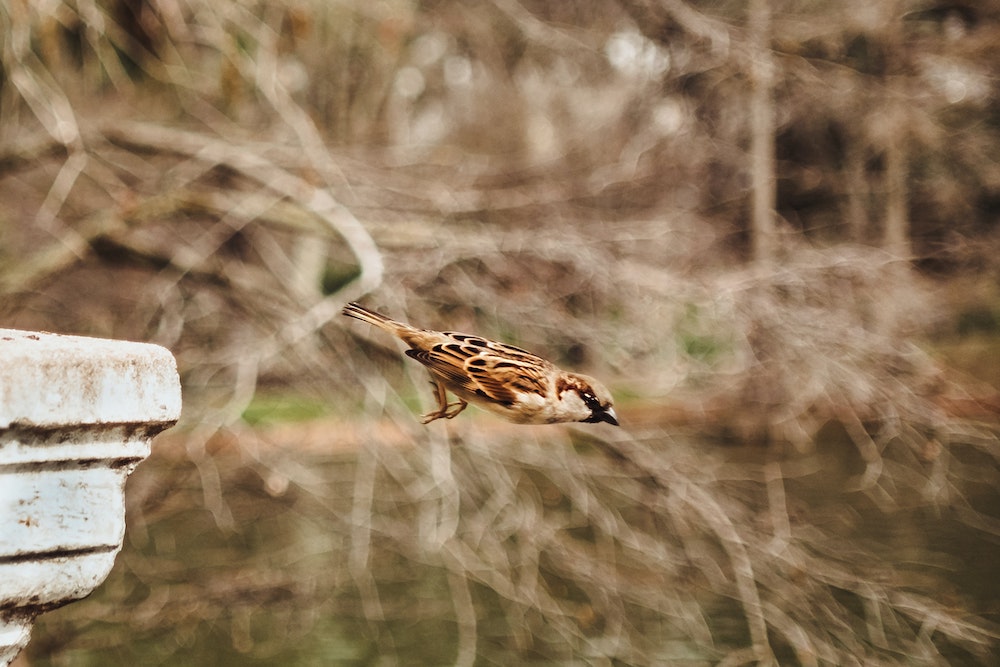Have you ever had one of those dreams where you run and run but never seem to get anywhere?
I woke up from a nap the other day with my heart pounding and sweat beading on my forehead. I hadn’t been running in my dream—I had been flapping. I dreamt I was a migrating bird.
This is what I get for studying bird migration so intensely, for my awe at the feats these birds accomplish. I dreamt I was a yellow warbler, a golden speck caught between the blue Gulf of Mexico and a springtime sky. I knew I couldn’t land on the water, and the thin line of the coast was still so far away… It is a perilous journey, this thousand-mile undulation of bird bodies.
So it is with gratitude and tenderness that I send a springtime greeting to the birds of the northern hemisphere. Yellow-rumped warblers in cottonwood trees, tanagers lighting on bare branches like sudden tropical fruit, fox sparrows scratching the leaf litter and singing, not to mention the electric zoom of hummingbirds. Waves of birds pass overhead at night—literal tons of feathered bodies moving north over this continent. And ounce-for-ounce, birds bring me more delight than just about anything.
We’re awfully lucky to have the birds we do. Along with their sheer beauty, the many facets of their lives and vocalizations (what we call “bird language”) they help humans tune into the soundscapes that surround us.
Jon Young has said that knowing individual birds is one of the keys to understanding bird language, and I have certainly found that to be true. I joke that instead of watching soap operas, I turn to birds for vicarious thrills. Nest-building, territorial disputes, surprising deaths and disappearances, a towhee putting the moves on a female from an adjacent territory: it’s high drama within the 100 paces of my sit spot area.
Spring is an excellent time to dive this deeply into the lives of the birds. Because most birds stick to a small area to raise a brood of chicks, you have a better chance of getting to know them than in the winter when they may move far away due to food availability. Sometimes you may get to know them even better than you anticipated—last year, robins nested in the Havahart trap in the rafters of my garage! The male had a few white feathers behind his right eye, making him easier to identify.
Daily visits to your sit spot will reveal patterns in behavior as well as plumage. Big Spot, the song sparrow, hangs out to the east of my spot, while Droopy Left Wing and his mate, Colorful, stay to the west. You can see that I am not very creative with names, but naming according to characteristics helps reinforce my memory. Even if you are not 100% certain that you are seeing the same individuals, start to find patterns of behavior that might give you some clues. Yesterday I stood in my sunny pasture, pointing to each song sparrow as he sang. Within minutes I had a basic idea of how many song sparrow territories are within earshot, and where they are.
Give it a try!
It’s also worth listening to identify individual male birds by their songs—making sure you learn a species that has some variation. Song sparrows are the classic bird for this, because each male has a repertoire of eight to ten songs. Some of those songs may be the same as what his neighbors sing, but he’ll have his own version and voice. My mentor in college researched hooded warblers, and found that the male birds remembered the songs of their neighbors from year to year. If an unknown male showed up, the adjacent males would sing more vigorously, perhaps to encroach on the territory of “the new guy.”
I wish I had kept better track of my song sparrows from year to year, because this year Droopy Left Wing (DLW in my journal) and Big Spot have been having quiet song battles as they hop along their territory boundary. DLW has actually pushed the bigger bird to the east. Where was their boundary last year? Are these in fact the same birds that have lived next to me for twelve months?
Even as I ponder these questions, I wonder why I am so fascinated by them. “Isn’t there something more practical I could be doing?” chimes Duct-tape Man. But in the stillness of sitting for even half an hour, in the delight at the birds who come to feed near me even before I sit down, I find something that is deeply nourishing to my wild self.
What is the significance of birds in our lives? Is there some metaphor at work, some way of taking flight ourselves? The language of the birds opens my hearing, allows a deeper way of listening to sink into my brain. To see the female towhee with strands of grass in her beak this morning brought a glow to my heart.
Why this joy at seeing the processes of nature? What made that glow so authentic? I don’t know, but my door is open as I write these words. Despite the cool draft, I want no intermediary pane of glass between me and the juncos, the robins, the drum of the sapsucker. When I see the chickadee in the suburban garden, or the white-crowned sparrow in the parking lot, I see the seeds of wildness ready to sprout.
I feel how the wings of the birds connect us all. My temperate backyard is connected to a tropical jungle because of the birds. My heart is connected to the towhee nest in the brush pile. My love for the song sparrow brings me to my sit spot each day. For this inspiring love, for the lifting up of my mind, I can only say thank you.
Thank you, and a handful of sunflower seeds.
